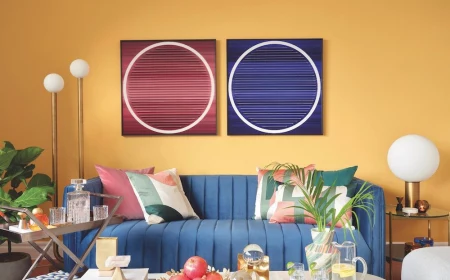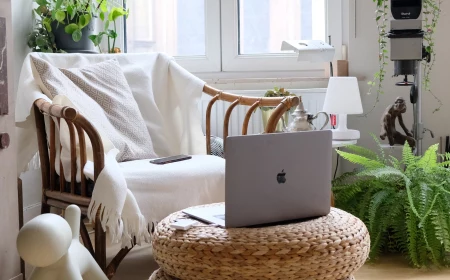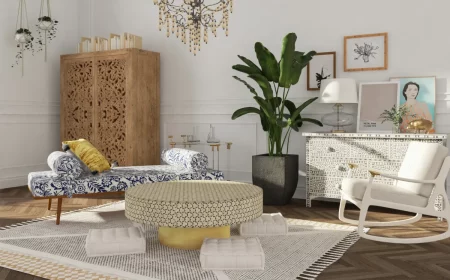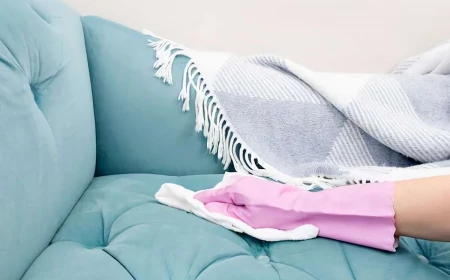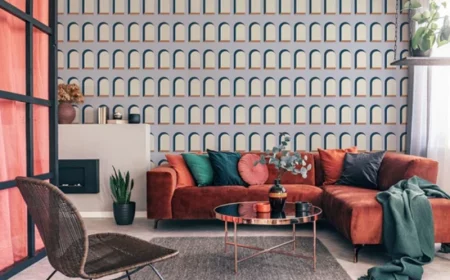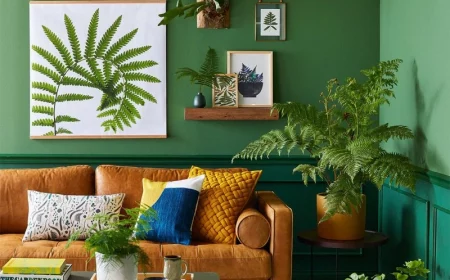Bean Bag Chairs Aren’t Just for Dorm Rooms Anymore: A Buyer’s Guide
I’ve worked with furniture and fabrics for a long time, and I’ve seen trends come and go. But one piece that people consistently get wrong? The humble bean bag chair. I get it. We all have that memory of a cheap, sticky vinyl bag that went completely flat after a month. But let me tell you, a well-made, thoughtfully chosen bean bag is a serious piece of furniture. It can bring a level of comfort, texture, and flexibility to your living room that few other things can.
In this article
Honestly, the difference between a quality chair and a disposable one is huge. It all comes down to what’s going on inside and out. This isn’t just about tossing a sack in the corner; it’s about making a smart design choice. So, let’s break down what I’ve learned so you can find a bean bag that will actually last and make your space better.
What Really Makes a Good Bean Bag Chair
The real performance of a bean bag is all about what you can’t see. The fill and a couple of key construction details are everything. Understanding these helps you know what you’re paying for, because a low price tag often means they’ve cut corners where it matters most.
The Fill: The Heart of Your Chair’s Comfort
The stuff inside the bag dictates how it feels, how much it weighs, and how long it’ll last. There are a few main types, and each one has some clear pros and cons.
Expanded Polystyrene (EPS) Beads: This is what you’ll find in most bean bags. They’re tiny, hard, lightweight foam beads, and they’re the standard because they’re cheap. They’re not all bad, but you need to know what you’re getting. They’re super light, so moving the chair is a breeze. The downside? They compress over time. That’s the number one complaint I hear—the bag goes flat as the air gets squeezed out of the beads. They also make a distinct shuffling sound. If you go this route, look for ‘virgin’ beads (not recycled) that are smaller, around 3 to 5 millimeters. They tend to hold their shape a bit longer.
Expanded Polypropylene (EPP) Beads: This is the stuff the pros use for commercial projects, like cool office lounges. EPP is a much more resilient type of foam bead. It has a memory-like quality, so it bounces back after being compressed. It’s way more durable and resists flattening. Oh yeah, and it’s quiet—just a soft whisper instead of a loud rustle. The main drawback is the price. Expect to pay a good 50% to 100% more for an EPP-filled chair. That $200 EPS bag might cost closer to $350 or $400 with premium EPP fill, but you’re paying for longevity.
Shredded Memory Foam: This has become a really popular option. Instead of beads, the bag is packed with chopped-up memory foam, giving you a totally different seating experience. It’s completely silent and conforms to your body for a unique, sinking feeling that many people absolutely love. But heads up, memory foam is heavy. A big foam-filled bag can be a real workout to move or fluff up. It can also trap body heat, which isn’t ideal for warmer climates. Quality is everything here; cheap foam can feel lumpy and sometimes has a chemical smell.
Quick tip: If your new foam bag has that factory smell, just unzip the outer cover and let the inner bag air out in a well-ventilated room or garage for 48 hours. It makes a huge difference!
The Fabric: More Than Just a Pretty Face
The cover is what you see and touch, and it dictates the look, feel, and cleaning routine. Your choice should really match your lifestyle.
- Leather and Faux Leather: Gives you that classic, sophisticated vibe. It’s durable and easy to wipe clean, though real leather costs a pretty penny. Faux leather is a decent budget alternative, but cheaper versions can crack over time.
- Cotton and Canvas: These are my go-to for homes with kids and pets. A heavy duck canvas is incredibly tough and breathable. They come in every color imaginable, but they can stain. Look for one with a stain-resistant treatment.
- Velvet and Corduroy: Nothing beats these for adding a cozy, touchable texture to a room. They just feel so inviting. The trade-off is that they are absolute magnets for pet hair and lint, so they’re better for rooms that don’t see a ton of traffic.
- Outdoor Fabrics: Materials designed for the outdoors are amazing. They resist UV rays, water, and mildew. They’re a fantastic choice not just for the patio, but for sunny living rooms or kid-centric playrooms. The texture can be a bit stiffer, but modern versions are much softer than they used to be.
The Two Non-Negotiable Features
For me, two construction details are an absolute must. They’re all about safety and practicality.
1. An Inner Liner: A quality bean bag will always have a separate inner bag that holds the fill. The pretty, decorative cover goes over top of it. This is critical because it means you can take the outer cover off and throw it in the wash. Trust me, it’s the only way to keep a fabric bean bag truly clean. I’ll never forget a client whose dog tore into a cheap, single-layer bag. The static-cling bead explosion was an absolute nightmare. It’s why I’m now a stickler for the two-layer system!
2. Safety Zippers: Any bean bag sold in places like the US or UK must have safety-locking zippers. These are designed without a pull tab. You need to insert a paperclip or a special key into the slider to open it. This is a critical feature to prevent small children from opening the bag and getting to the fill, which is a serious choking hazard.
How to Actually Place a Bean Bag in Your Home
Okay, so you know what makes a good one. Now, how do you make it look good? It’s all about thinking about scale, function, and balance.
Getting the Size Right
This is probably the most common mistake people make. A giant bean bag can completely swallow a small room, while a tiny one looks silly in a big, open space. As a rule of thumb, leave at least three feet of clear walking space around it.
Here’s a great trick: before you buy, use masking tape to mark the chair’s dimensions on your floor. Live with that tape outline for a day or two. Go on, try it now! Tape out a 3-foot circle where you want your chair. How does it affect the walkway? This gives you a real feel for its size and how it impacts the flow of the room.
Think About How You’ll Use It
What’s this chair actually for? The shape you choose should depend on the activity.
- For a Reading Nook: You want support. Look for a pear-shaped or high-back lounger style. These give you some back and neck support so you can settle in with a book.
- For Gaming: Gamers often like being lower to the ground. A classic round bag or a big, slab-like cushion works perfectly, letting them lean into the action.
- For Social Seating: Need an extra seat for guests? A firmer, cube-shaped bean bag can double as an ottoman or a stool. They’re also much easier for people to get in and out of.
- For the Family Room: Go for durability. A huge, floor-cushion style bag in tough canvas is perfect for kids and adults to pile onto for movie night.
Balancing Your Room’s Design
A bean bag shouldn’t look like an accident. Use it to introduce a contrasting texture. If your sofa is smooth leather, a chunky knit or rough canvas bean bag adds a layer of visual interest. For color, you can either go bold with a vibrant accent (like mustard yellow in a gray room) or choose a secondary color from a rug or art to tie things together. A word of advice: don’t try to perfectly match your sofa. The materials will never be identical, and it’ll just look like a near-miss.
The Practical Stuff: Budgets, Maintenance, and Safety
Let’s talk money and upkeep. It’s tempting to grab that $50 bean bag, but if it ends up in a landfill in six months, you haven’t saved anything. A well-made chair might cost between $200 and $500, but it can last for a decade.
Your Quick Shopping Checklist
Before you hit ‘buy,’ run through this list. You can even pull it up on your phone in the store.
- Does it have a separate inner liner for the fill?
- Does it have safety-locking zippers?
- Is a fire-safety standard (like TB 117-2013 or BS 5852) clearly listed?
- Is the type of fill (EPS, EPP, or Foam) specified?
Topping Up The Fill: A Mini-Tutorial
Even the best bead-filled bags will compress a little over time. Plan on buying a small bag of refill beads every couple of years. A noticeably flat 4-foot bag often needs about 2 to 3 cubic feet of new fill to feel like new again. Refill bags usually cost between $20 and $60 depending on the quality and can be found online or at stores like Home Depot.
Be warned: the beads have a ton of static and will try to fly everywhere. Here’s how to do it without making a huge mess:
- Get your tool. Unbend a paperclip and use it to pull open the safety zippers on the outer cover and inner liner.
- Fight the static. Lightly mist the inside of the liner’s opening and the opening of the refill bag with water from a spray bottle. This is a game-changer.
- Make a funnel. Roll up a piece of cardboard or a file folder to create a funnel to guide the beads.
- Pour slowly! Go slow and steady to pour the new fill into the inner liner. Then just zip everything back up, and you’re done.
A Critical Warning on Safety
This is my most important piece of advice. Furniture sold in most Western countries has to meet specific fire safety standards. In the US, it’s typically TB 117-2013. In the UK, it’s the very strict BS 5852. These regulations ensure the fabric and fill won’t burst into flames from a stray spark. Reputable brands will state their compliance. Cheap, unbranded products from overseas online marketplaces may not meet these standards, and that’s downright scary. Never, ever buy a bean bag that doesn’t explicitly state it meets your country’s fire safety codes.
So, a bean bag chair is so much more than a sack of beans. When you choose one with a little bit of knowledge and an eye for design, it can be one of the most comfortable, stylish, and versatile seats in your home. It’s furniture that invites you to actually relax, and that’s always a good investment.
Inspirational Gallery
The biggest sizing mistake: A bean bag that looks great online can feel tiny or overwhelming in your actual room. Before you commit, use masking tape to outline the chair’s diameter on your floor. This simple trick lets you truly visualize its footprint and ensures it complements, rather than dominates, your space.
The original ‘Sacco’ bean bag, designed in 1968, is part of the permanent collection at New York’s Museum of Modern Art (MoMA), cementing its status as a design icon.
This isn’t just dorm furniture; it’s a piece of design history. Choosing a bean bag with a distinct shape or luxurious fabric, like velvet or real leather, connects your space to this legacy of innovative, comfortable design.
Don’t just place it, style it! Create the perfect reading nook:
- Pair your bean bag with a low-profile side table to hold a drink and a book.
- Add a directional floor lamp, like an arc lamp, to cast a warm, focused glow.
- Drape a chunky knit or faux fur throw over the side for an extra layer of texture and coziness.
Wondering how to integrate a bean bag into a more formal or minimalist decor?
The key is texture and color. Opt for a model with a structured fabric like a rich corduroy or a sophisticated linen weave in a neutral tone—think charcoal grey, oatmeal, or deep navy. This adds a soft, inviting element that breaks up hard lines without clashing with the room’s refined aesthetic. It’s all about adding comfort without sacrificing style.
Fabric Face-Off: Faux Fur vs. Weather-Resistant Canvas
Faux Fur: The ultimate in sensory luxury. Incredibly soft and warm, it’s perfect for creating a cozy sanctuary indoors. Best for low-traffic, pet-free zones as it requires more delicate care.
Canvas (e.g., Sunbrella): The workhorse. Durable, easy to clean, and often UV- and water-resistant, making it ideal for family rooms, patios, or poolside lounging. Brands like Fatboy specialize in these robust, go-anywhere options.
- It can be a single armchair for quiet reading.
- It can morph into a loveseat for two.
- It can become a full sofa for family movie night.
The secret? Modular systems. Brands like Lovesac have redefined the bean bag with their Sactionals, which are collections of seats and sides you can reconfigure endlessly. It’s the ultimate furniture for spaces that need to adapt.
Think about the sound. The article mentions the rustle of cheap beads, but the sensory experience goes further. A memory foam chair is completely silent, offering a quiet, enveloping sink. A premium EPP bead fill provides a soft, hushed whisper as you settle in. This auditory detail significantly impacts the overall feeling of calm and relaxation the chair provides.
A study in the journal *Ergonomics* found that ‘dynamic seating’—which allows for free movement—can reduce spinal discomfort compared to static postures.
A bean bag is the epitome of dynamic seating. It forces micro-adjustments as you shift, engaging your core and preventing the stiffness that comes from sitting in a rigid chair for hours. It’s not just comfortable; it’s smarter for your body.
For homes with kids and pets, the cover is everything. Look for models with a two-part system: a separate inner liner that holds the fill and a removable, machine-washable outer cover. This is a non-negotiable feature for longevity and hygiene. A quick zip and a cycle in the wash can erase spills and keep your chair looking and smelling fresh.
Does your bean bag feel a bit flat? Don’t replace it, revive it. High-quality brands like CordaRoy’s or Lovesac sell refill bags of foam or beads. Simply unzip the liner and top it off to restore its original plumpness and support. It’s a sustainable and cost-effective way to extend the life of your favorite comfy seat for years.

